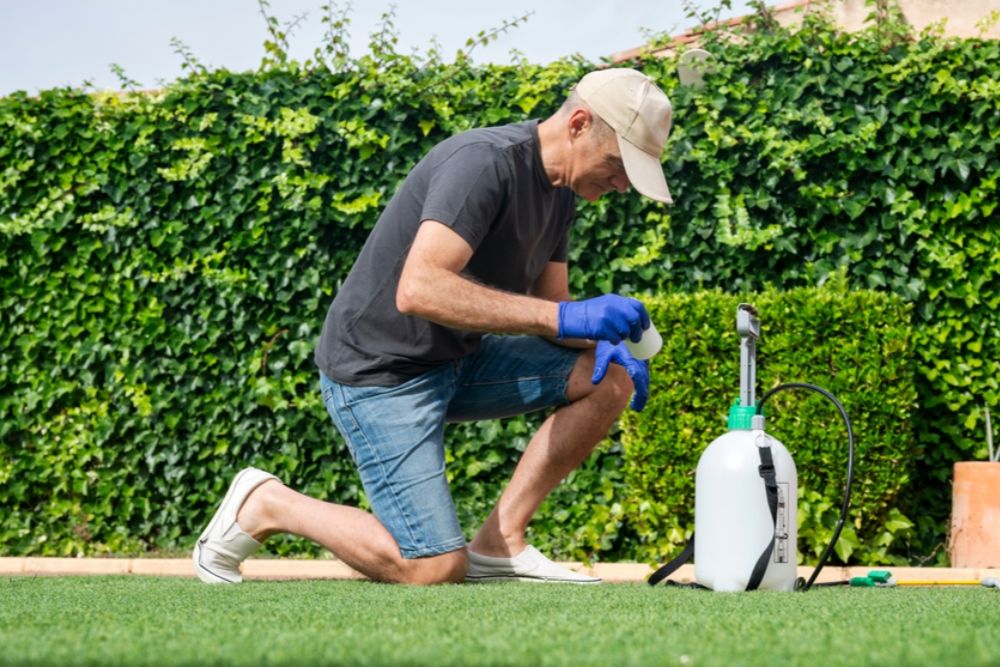Pests like ants, roaches, termites, and rodents can damage your home, spread disease, and cost a fortune to remove once they take hold. But you don’t have to wait until an infestation happens to take action—and you also don’t have to spend a lot of money on professional pest control right away. With smart habits, affordable DIY solutions, and a proactive approach, you can keep your home pest-free while staying within your budget.
Seal Entry Points Before Problems Start
One of the most effective (and cheapest) ways to prevent pests is to block their way in.
-
Inspect for gaps: Check doors, windows, baseboards, and pipes for cracks or openings.
-
Seal with caulk or weatherstripping: Affordable and easy to apply around windows and doors.
-
Use door sweeps: Keep insects and rodents from slipping under exterior doors.
-
Install screens: Repair or replace torn window and vent screens to keep bugs out.
Preventing entry is far cheaper than dealing with an infestation later.
Keep Your Home Clean and Unattractive to Pests
Food and clutter attract pests. A clean home reduces the need for costly treatments.
-
Wipe counters and sweep floors: Even crumbs can bring ants or roaches.
-
Store food in sealed containers: Keeps dry goods safe from pantry pests and rodents.
-
Take out trash regularly: Avoid letting food waste sit and attract bugs.
-
Declutter: Pests like mice and cockroaches thrive in piles of cardboard, paper, and fabric.
Consistency is key—these small habits go a long way toward preventing infestations.
Eliminate Moisture Sources
Many pests, including termites and roaches, thrive in damp environments.
-
Fix leaky pipes or faucets: Even small drips can attract bugs.
-
Dry out damp areas: Use a dehumidifier in basements or crawl spaces.
-
Clean gutters: Standing water can attract mosquitoes and cause other pest issues.
-
Improve ventilation: Keeps bathrooms, laundry rooms, and kitchens dry.
Managing moisture keeps your home less inviting to pests and saves on costly water damage repairs.
Use Natural and DIY Deterrents
You don’t always need expensive chemicals to keep pests away.
-
Vinegar: Great for wiping counters to deter ants.
-
Essential oils: Peppermint and eucalyptus repel spiders and some insects.
-
Baking soda and sugar traps: Cheap and effective against ants and roaches.
-
Diatomaceous earth: Safe for humans and pets but deadly to many crawling insects.
DIY methods work best when used early, before pests become a major problem.
Buy Pest Control Products in Bulk
If you use traps or sprays, buying larger quantities can save money.
-
Purchase refill packs: Instead of buying individual bait stations.
-
Shop at home improvement stores: They often have better prices on larger pest control products.
-
Order online: Bulk options are usually cheaper and last longer.
Stocking up on basics like ant baits or roach gel means you’re ready before an issue gets worse.
Maintain Your Yard to Reduce Infestations
Outdoor pests often become indoor pests if your yard invites them in.
-
Trim plants away from your house: Prevents ants and rodents from finding easy entry points.
-
Remove standing water: Stops mosquitoes from breeding.
-
Keep firewood away from your home: Reduces termite and rodent risk.
-
Mow and weed regularly: Tall grass and debris attract pests.
A little yard work can save you the high cost of indoor pest removal later.
Consider Preventative Professional Treatments
If you live in a high-risk area for pests like termites or cockroaches, preventive treatments can be cheaper than emergency calls.
-
Ask about seasonal packages: Some pest control companies offer discounted maintenance plans.
-
Get quotes from multiple providers: Prices vary widely—compare before committing.
-
Look for new customer deals: Many companies offer big discounts for first-time clients.
-
Schedule off-season visits: Services may be cheaper when demand is lower.
Preventative services can cost less long-term than paying for emergency infestations.
Use Traps and Baits Instead of Frequent Sprays
Spraying chemicals regularly can be expensive and sometimes unnecessary.
-
Set traps for mice and insects: More affordable and targeted than whole-house sprays.
-
Use gel baits for ants and roaches: They last longer and work more effectively than aerosol sprays.
-
Combine methods: Start with traps and only use sprays if needed.
Using traps smartly can keep your home protected while spending far less than routine chemical treatments.
Monitor Regularly to Catch Problems Early
The earlier you notice a pest issue, the cheaper it is to fix.
-
Inspect your home monthly: Look for droppings, chew marks, or unusual damage.
-
Check hidden spaces: Behind appliances, in basements, and in storage closets.
-
Use sticky traps: They can alert you to crawling insects before a full infestation.
Early detection means you can take DIY action before professional help becomes necessary.
Avoid Overpaying for Branded Solutions
Big-name pest control products aren’t always better than generic ones.
-
Compare active ingredients: Many store brands use the same chemicals as premium products.
-
Read reviews before buying: Affordable options often perform just as well.
-
Skip unnecessary gadgets: Fancy electronic repellents rarely work as advertised.
Paying for a name brand doesn’t guarantee better protection.
Common Mistakes to Avoid
-
Waiting until the problem is serious: Emergency extermination is expensive.
-
Using too much spray: Can waste money and may harm pets or children.
-
Ignoring entry points: Sealing cracks is cheaper and more effective long-term.
-
Not cleaning regularly: Food crumbs and clutter attract pests no matter how many traps you set.
-
Assuming professional service is always costly: Sometimes seasonal or preventive treatments save more than DIY fixes gone wrong.
Avoiding these mistakes keeps your pest prevention plan budget-friendly and effective.
Keeping your home pest-free doesn’t require expensive treatments or constant professional help. By sealing entry points, maintaining a clean and dry environment, using DIY repellents, and acting early, you can avoid infestations without overspending. Shop smart for pest control products, maintain your yard, and consider preventative services if you live in a high-risk area. A proactive approach keeps both pests and costs under control.





